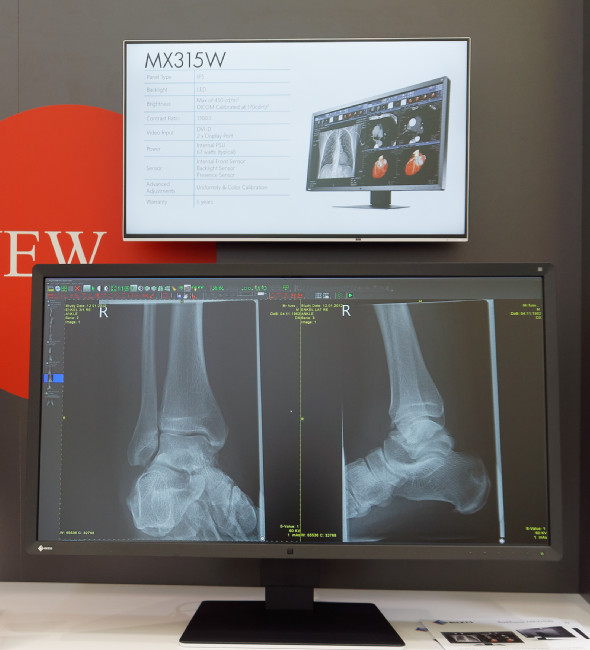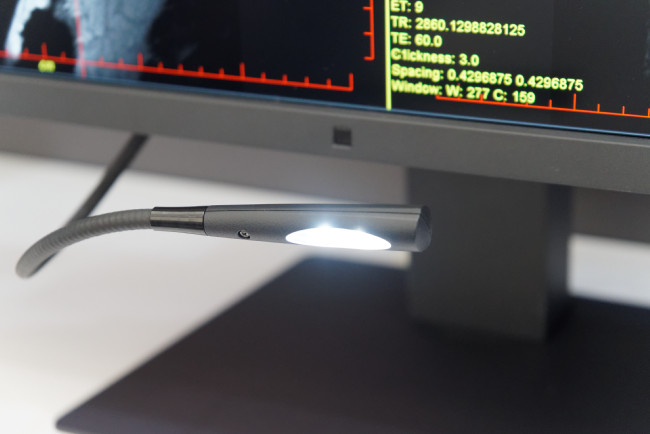The first new monitor that we looked at on the Eizo booth was a clinical review monitor, the MX315W, that we reported on previously (Eizo RadiForce Monitor Has Highest Brightness). The monitor is a DCI 4K unit that has 4096 x 2160 resolution and a 31.1″ panel. The bezel width is noticeably slimmer than the last generation of monitors and it looks slightly more stylish.
Brightness of the monitor is high at 450 cd/m² calibrated, although the lifetime recommended brightness is 270 cd/m² (DICOM calibrated at 170 cd/m²) and features include DisplayPort daisy-chaining which is now a common feature on Eizo medical displays, making multi-display support simpler. The monitor also has an integrated power supply, while the previous model had a fairly bulky external unit. Warranty is five years.

The RX660 is a 6 megapixel diagnostic monitor that is an update to the RX650, and was launched at the RSNA (EIZO Releases 6 Mpixel RadiForce RX660 Monitor) An optional feature is an LED light that can be fitted to illuminate documents and the monitor has a rear light for giving some ambient lighting, although review monitors are often used in relatively bright locations. We thought that the anti-glare performance was particularly good and better than some of the other older monitors. All doctors, even pathologists, wear white when, from a visual ergonomics point of view, it would be better if they wore black. Of course, patients might not be so keen!
Eizo told us that, increasingly, there is a desire for six or eight megapixel displays that can be used for everything, especially where space is limited. Although the market is mainly a replacement business, there is a reasonable amount of up-grading from lower pixel count displays and that is helping to keep revenues positive.
 Eizo has an optional reading light. Image:Meko
Eizo has an optional reading light. Image:Meko
Analyst Comment
I asked Eizo about the kind of ‘value add’ features that I saw from Barco and even from Jusha, later. Eizo told me that the company concentrates on the displays themselves to make them as good as possible. However, we later heard from Eizo that there is a feature called ‘Work-and-flow’ on the RX660 which automatically switches to a picture in picture (PiP) mode when the mouse gets to the edge of the display. That means that a separate PC can be used for patient data display and editing without changing the mouse and keyboard. The Work-and-Flow feature allows a single keyboard and mouse to be used for dual PCs. (BR)

